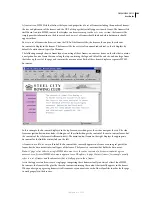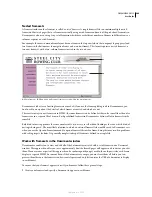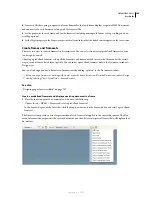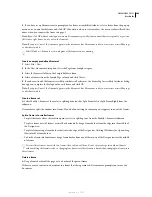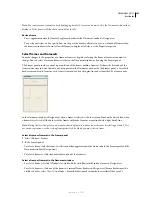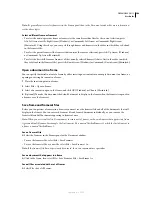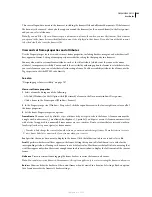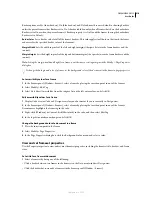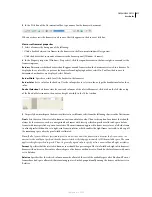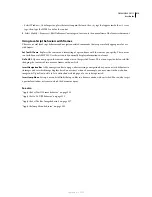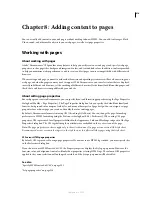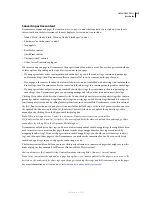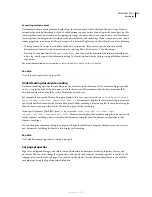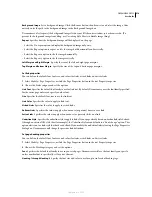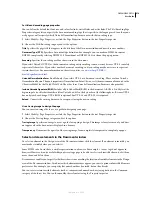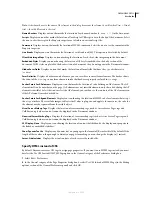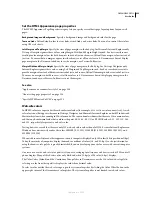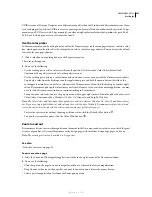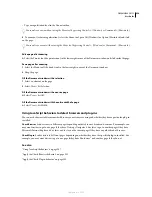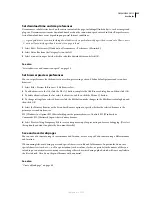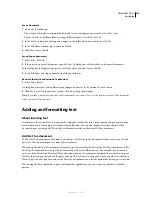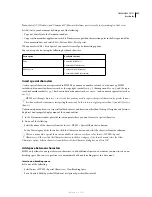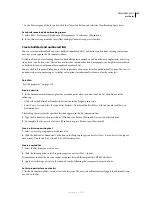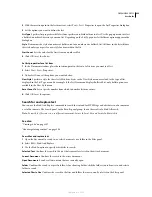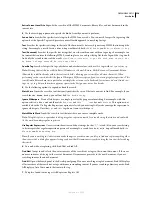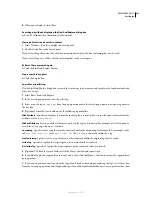
DREAMWEAVER CS3
User Guide
216
Converting custom content
Dreamweaver only converts param and embed tags that are contained within the identified object tags. If you've
customized your code (for example, if you've added an img tag, or any other kind of tag inside your object tag), the
JavaScript functions do not write out the appropriate strings for that content at run time because the Dreamweaver
JavaScript function only generates attribute-value pairs for param and embed tags. If you want your custom code to
render properly at run time and still work as expected in Internet Explorer, you will need to do one of the following:
•
Write your own JavaScript function that works with custom code. (If you want, you can also turn off the
Dreamweaver Convert Active Content feature by selecting Edit > Preferences > Code Rewriting.)
•
Develop an extension that lets the
generateScript()
function look for other kinds of information within the
object tag, and that passes that information along to a JavaScript function for the processing of different kinds of
arguments.
For more information on active content, visit
www.adobe.com/devnet/activecontent/
.
See also
“Search for and replace text” on page 229
Understanding document encoding
Document encoding specifies the encoding used for characters in the document. Document encoding is specified
in a
meta
tag in the head of the document; it tells the browser and Dreamweaver how the document should be
decoded and what fonts should be used to display the decoded text.
For example, if you specify Western European (Latin1), this
meta
tag is inserted:
<meta http-equiv="Content-
Type" content="text/html; charset=iso-8859-1">
. Dreamweaver displays the document using the fonts you
specify in Fonts Preferences for the Western European (Latin1) encoding; a browser displays the document using the
fonts the browser user specifies for the Western European (Latin1) encoding.
If you specify Japanese (Shift JIS), this
meta
tag is inserted:
<meta http-equiv="Content-Type"
content="text/html; charset=Shift_JIS">
. Dreamweaver displays the document using the fonts you specify
for the Japanese encoding; a browser displays the document using the fonts the browser user specifies for the
Japanese encodings.
You can change document encoding for a page and change the default encoding that Dreamweaver uses to create
new documents, including the fonts used to display each encoding.
See also
“Set default document type and encoding” on page 74
Set page properties
Page titles, background images and colors, text and link colors, and margins are basic properties of every web
document. You can set or change these properties, and specify the document encoding type that is specific to the
language used to author the web page. You can also specify which Unicode Normalization Form to use with that
encoding type using the Page Properties dialog box.
September 4, 2007

